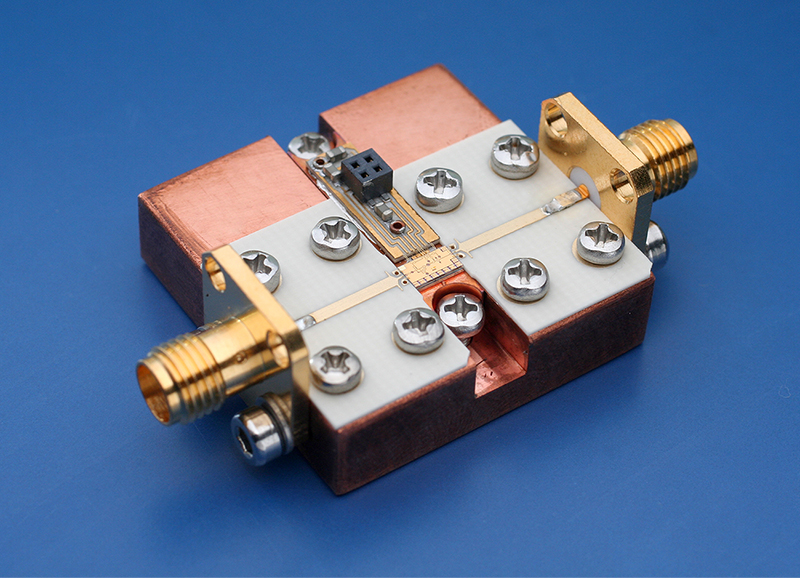Joint Lab BTU-CS – FBH Microwave
Brandenburg University of Technology Cottbus-Senftenberg and Ferdinand-Braun-Institut, Leibniz-Institut für Höchstfrequenztechnik joined forces within the Joint Lab BTU-CS - FBH Microwave. Specifically, the Joint Lab addresses two topics: transistor modeling and low-noise amplifier design

Rugged low-noise amplifiers
The signals received through a wireless link are commonly very weak. Therefore, low-noise amplifiers (LNAs) are used in the first receiver stage in order to amplify the signal to a power level required for further processing without adding significant distortion. Although LNAs are designed to amplify very low power levels, there are chances that they receive very strong signals, which is not desired. This could happen, for example, if receive and transmit units are placed close to each other, like in mobile base stations and radar frontends. The traditional approach to prevent damage from the LNA due to input overdrive is to place power-limiting circuits between the antenna and the LNA.
LNAs based on GaN transistors, on the other hand, have the potential to withstand high input overdrive powers without requiring protection circuitry, since the material system intrinsically provides high breakdown voltages and high-power handling capability. Currently, our LNAs survive input powers of 24 W - compared to slightly above 10 W for other published GaN LNAs and typical roughly 100 mW for commercial LNAs in conventional GaAs technology. Thus, our LNAs enable single-chip transceivers even for high-power applications.
Our current research focuses on new circuit concepts combining better sensitivity in normal operation with even improved ruggedness in presence of a high-power overdrive signal.
Transistor modeling
Integrated circuits are designed relying on simulation software and cannot be tuned after being fabricated. The accuracy of the simulation software is therefore crucial for successful MMIC design. Transistor models are most decisive for simulation accuracy, as they are the mathematical description of the electrical and thermal transistor behavior. Since the FBH's core research field is semiconductor technology, transistor modeling is a continuous challenge.
Models are developed for all processes of the FBH foundry, for InP-transfer substrate HBT as well as for GaN-HEMT devices. Since different applications require different models, we characterize small-signal, noise, and large-signal performance of our devices. Advanced transistors frequently cannot be described through previously published models or even models available in commercial circuit simulators. Examples for the outcome of our research are the FBH-HBT model that is currently used for the InP-HBTs, models for white and 1/f noise of HBT as well as a nonlinear noise model for GaN HEMTs, and a model for packaged transistors.
